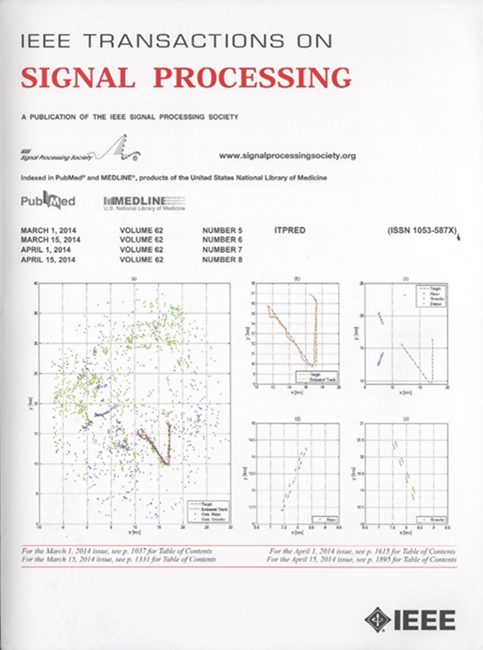GraphGrad: Efficient Estimation of Sparse Polynomial Representations for General State-Space Models
IF 4.6
2区 工程技术
Q1 ENGINEERING, ELECTRICAL & ELECTRONIC
引用次数: 0
Abstract
State-space models (SSMs) are a powerful statistical tool for modelling time-varying systems via a latent state. In these models, the latent state is never directly observed. Instead, a sequence of observations related to the state is available. The SSM is defined by the state dynamics and the observation model, both of which are described by parametric distributions. Estimation of parameters of these distributions is a very challenging, but essential, task for performing inference and prediction. Furthermore, it is typical that not all states of the system interact. We can therefore encode the interaction of the states via a graph, usually not fully connected. However, most parameter estimation methods do not take advantage of this feature. In this work, we propose GraphGrad, a fully automatic approach for obtaining sparse estimates of the state interactions of a non-linear SSM via a polynomial approximation. This novel methodology unveils the latent structure of the data-generating process, allowing us to infer both the structure and value of a rich and efficient parameterisation of a general SSM. Our method utilises a differentiable particle filter to optimise a Monte Carlo likelihood estimator. It also promotes sparsity in the estimated system through the use of suitable proximity updates, known to be more efficient and stable than subgradient methods. As shown in our paper, a number of well-known dynamical systems can be accurately represented and recovered by our method, providing basis for application to real-world scenarios.GraphGrad:一般状态空间模型的稀疏多项式表示的有效估计
状态空间模型(ssm)是一种强大的统计工具,可以通过潜在状态对时变系统进行建模。在这些模型中,潜在状态从未被直接观察到。相反,与状态相关的一系列观察是可用的。SSM由状态动力学和观测模型来定义,两者都用参数分布来描述。估计这些分布的参数是一项非常具有挑战性的任务,但对于进行推理和预测是必不可少的。此外,典型的情况是,并非系统的所有状态都相互作用。因此,我们可以通过一个通常不是完全连接的图来编码状态之间的相互作用。然而,大多数参数估计方法都没有利用这一特性。在这项工作中,我们提出了GraphGrad,这是一种全自动方法,用于通过多项式近似获得非线性SSM状态相互作用的稀疏估计。这种新颖的方法揭示了数据生成过程的潜在结构,使我们能够推断出一般SSM的丰富而有效的参数化的结构和值。我们的方法利用可微粒子滤波器来优化蒙特卡罗似然估计。它还通过使用合适的接近更新来提高估计系统的稀疏性,已知这比亚梯度方法更有效和稳定。结果表明,我们的方法可以准确地表示和恢复一些已知的动力系统,为应用于实际场景提供了基础。
本文章由计算机程序翻译,如有差异,请以英文原文为准。
求助全文
约1分钟内获得全文
求助全文
来源期刊

IEEE Transactions on Signal Processing
工程技术-工程:电子与电气
CiteScore
11.20
自引率
9.30%
发文量
310
审稿时长
3.0 months
期刊介绍:
The IEEE Transactions on Signal Processing covers novel theory, algorithms, performance analyses and applications of techniques for the processing, understanding, learning, retrieval, mining, and extraction of information from signals. The term “signal” includes, among others, audio, video, speech, image, communication, geophysical, sonar, radar, medical and musical signals. Examples of topics of interest include, but are not limited to, information processing and the theory and application of filtering, coding, transmitting, estimating, detecting, analyzing, recognizing, synthesizing, recording, and reproducing signals.
 求助内容:
求助内容: 应助结果提醒方式:
应助结果提醒方式:


